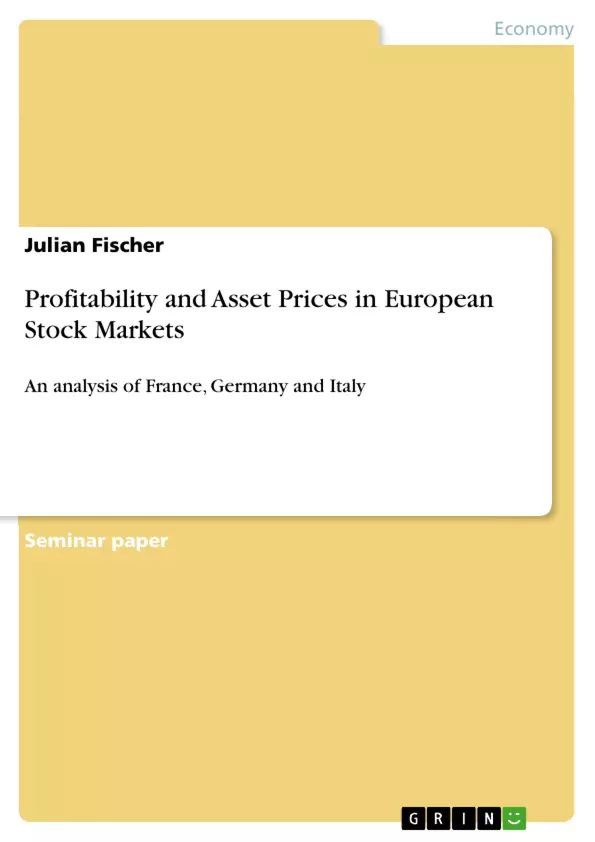In this paper, we examine profitability patterns for the German, France and Italian stock markets and compare it to previous research evidence of the European stock market. Most results of our examination are in line with previous investigations. Thus, we can confirm for all three countries, that more profitable firms earn higher risk-adjusted returns on average. Furthermore, Profitability Anomalies are present in the German and France stock market, but astonishingly not identifiable in the Italian stock markets. Five of seven profitability measures are suitable for identifying anomalies.
Latest studies on asset pricing models reveal new evidence for anomalies in the stock markets. The investigations of anomalies can be splitted in different categories: Momentum, Value-versus-growth, Investment, Intangibles, Trading frictions and Profitability. Most of the investigations assess stock markets on a continental level, like Europe, North America, Japan and Asia Pacific for instance. Undoubtedly, these results are very useful for an overall statement, but leaves one question unanswered: Are there any frictions within different European stock markets?
In this paper, we will examine the Profitability Anomalies of the German, France and Italian stock markets.
Inhaltsverzeichnis (Table of Contents)
- 1. Introduction
- 2. Fundamental theory and previous discoveries
- 2.1. Different Factor Models
- 2.2. Returns of different profitable companies
- 2.3. Profitability anomalies
- 3. Profitability Anomalies in European stock markets
- 3.1. Construction of the model
- 3.2. Summary Statistics
- 3.3. Factor Spanning Tests
- 3.4. High minus low quintiles of the Profitability Anomalies
- 3.5. Quintiles of the Profitability Anomalies
- 4. Conclusions
Zielsetzung und Themenschwerpunkte (Objectives and Key Themes)
This paper aims to analyze profitability patterns in the German, French, and Italian stock markets and compare them to existing research on the European stock market. The analysis focuses on identifying whether profitability anomalies exist in these markets and what factors contribute to them.
- Profitability patterns in European stock markets
- Risk-adjusted returns of profitable firms
- Profitability anomalies in different countries
- Factors driving profitability anomalies
- Comparison with existing research on European stock markets
Zusammenfassung der Kapitel (Chapter Summaries)
- Chapter 1: Introduction: This chapter provides an overview of the research topic and outlines the paper's objectives.
- Chapter 2: Fundamental theory and previous discoveries: This chapter presents the theoretical framework for the study, discussing different factor models and previous research findings on the relationship between profitability and asset returns.
- Chapter 3: Profitability Anomalies in European stock markets: This chapter details the research methodology, including the model construction, summary statistics, factor spanning tests, and analysis of high minus low quintiles of profitability anomalies. The chapter also presents data on the quintiles of profitability anomalies in the German, French, and Italian stock markets.
Schlüsselwörter (Keywords)
This paper explores key concepts such as profitability anomalies, factor models, risk-adjusted returns, and the relationship between profitability and asset pricing in the European stock market. The study focuses on the German, French, and Italian stock markets, examining data on profitability measures, risk-adjusted returns, and the presence or absence of anomalies in these markets.
- Quote paper
- Julian Fischer (Author), 2019, Profitability and Asset Prices in European Stock Markets, Munich, GRIN Verlag, https://www.grin.com/document/489732



